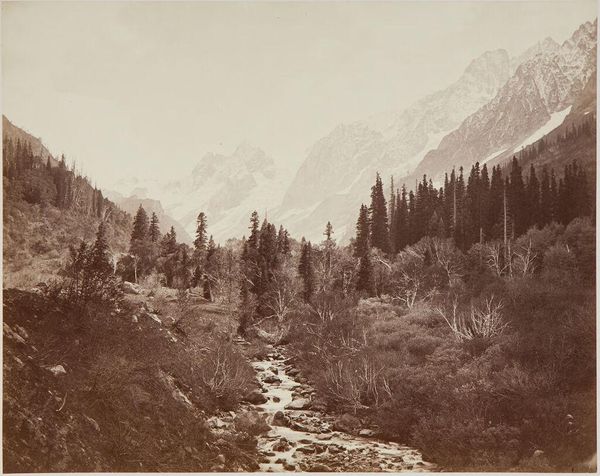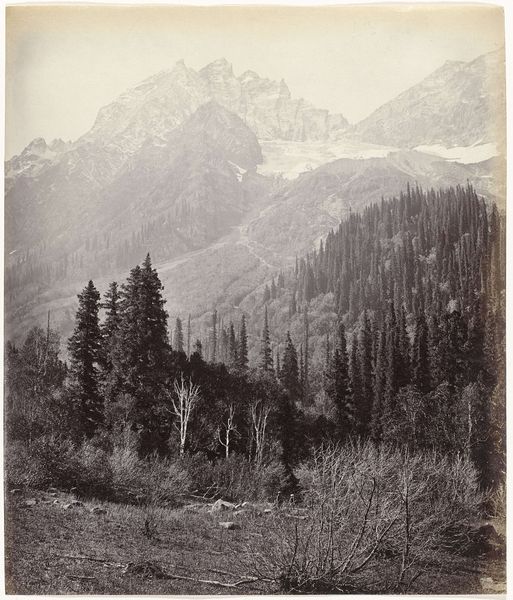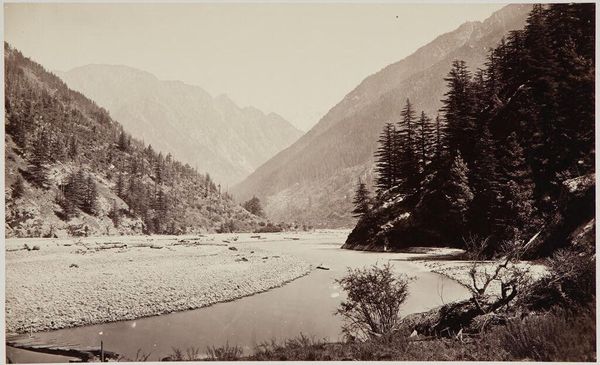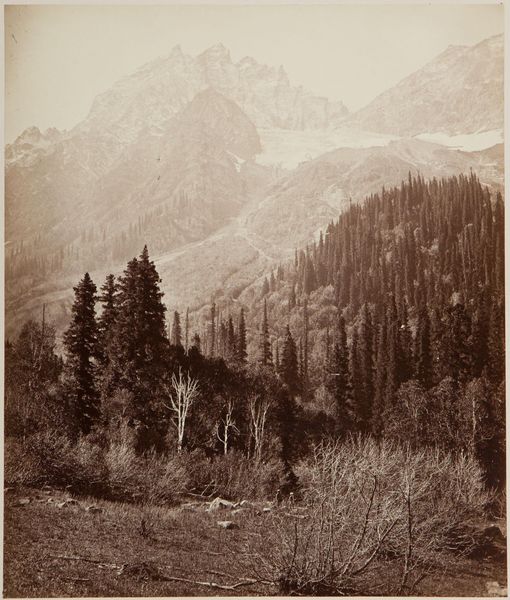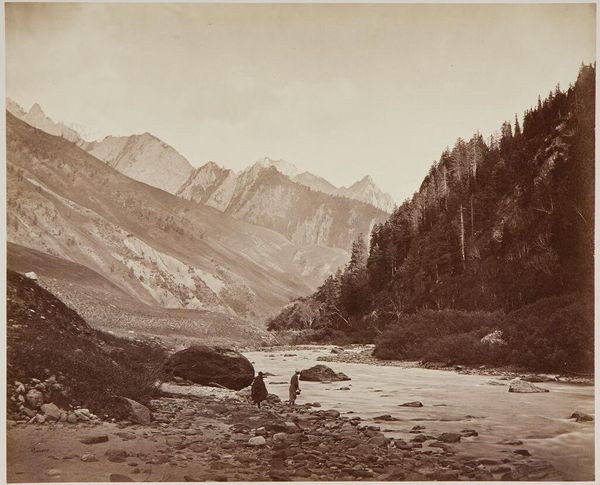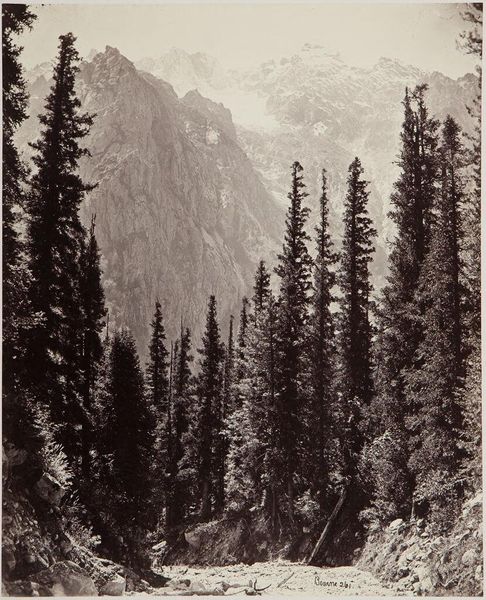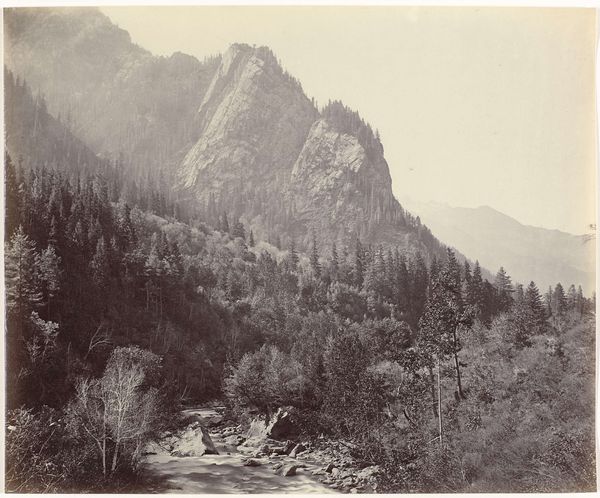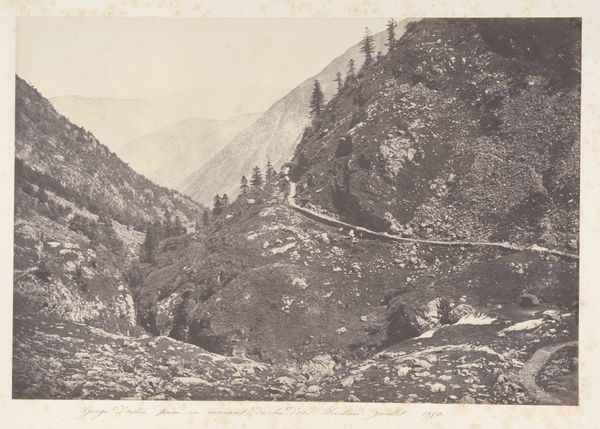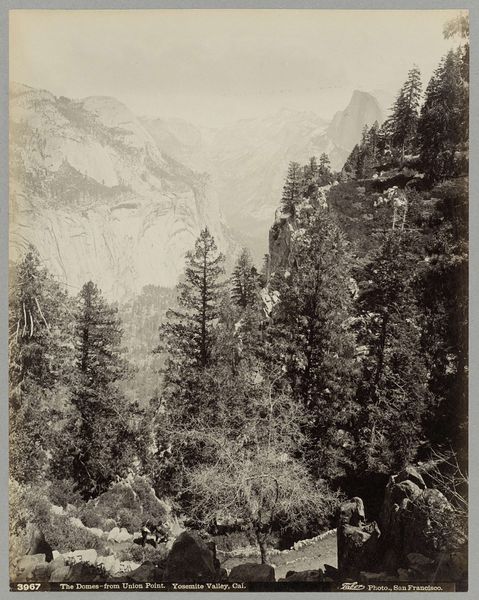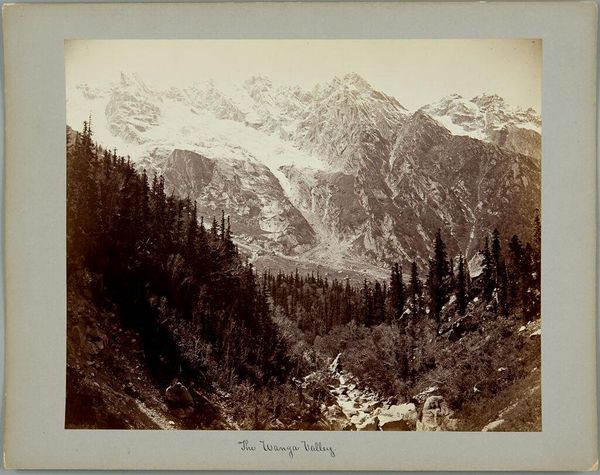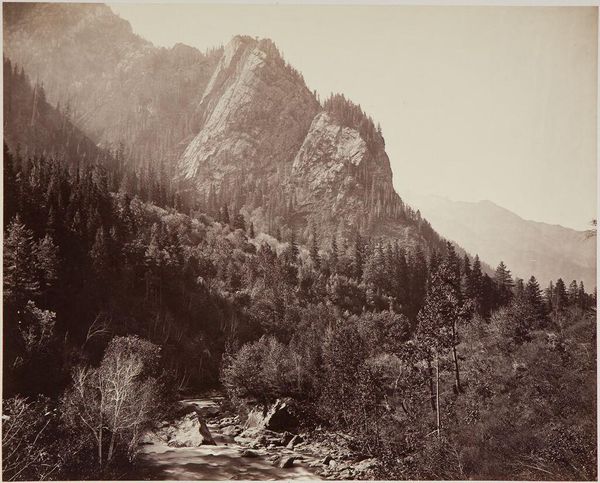
Dimensions: height 240 mm, width 289 mm
Copyright: Rijks Museum: Open Domain
This photograph of the Wangavallei in the Himalayas was taken by Samuel Bourne, an English photographer active in India in the 19th century. Bourne’s images were made using the wet collodion process, a demanding technique that required coating glass plates with chemicals right before exposure in the camera. The plate then had to be developed immediately. The portable darkroom in which Bourne mixed his volatile chemicals and prepared his plates would have been indispensable. Considering this image, it is easy to appreciate the effort involved in creating photographs of the Himalayas. It speaks to the ambition of 19th century photography, and the drive to document distant lands. As such, it reveals something about the culture that produced it: one of restless exploration, premised on industrial innovation. Hopefully, considering the immense labor behind this image enriches your understanding of the landscape it depicts. It prompts us to consider photography not just as an art form but as a feat of material production.
Comments
No comments
Be the first to comment and join the conversation on the ultimate creative platform.
